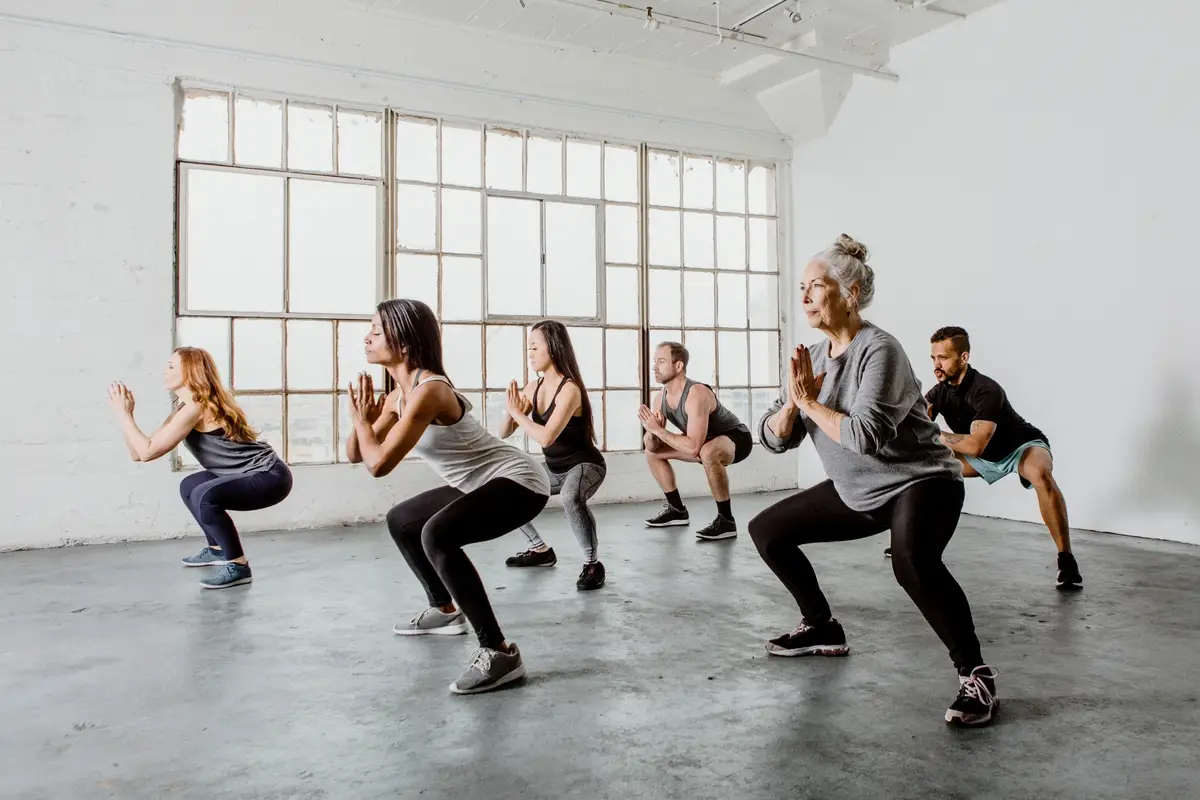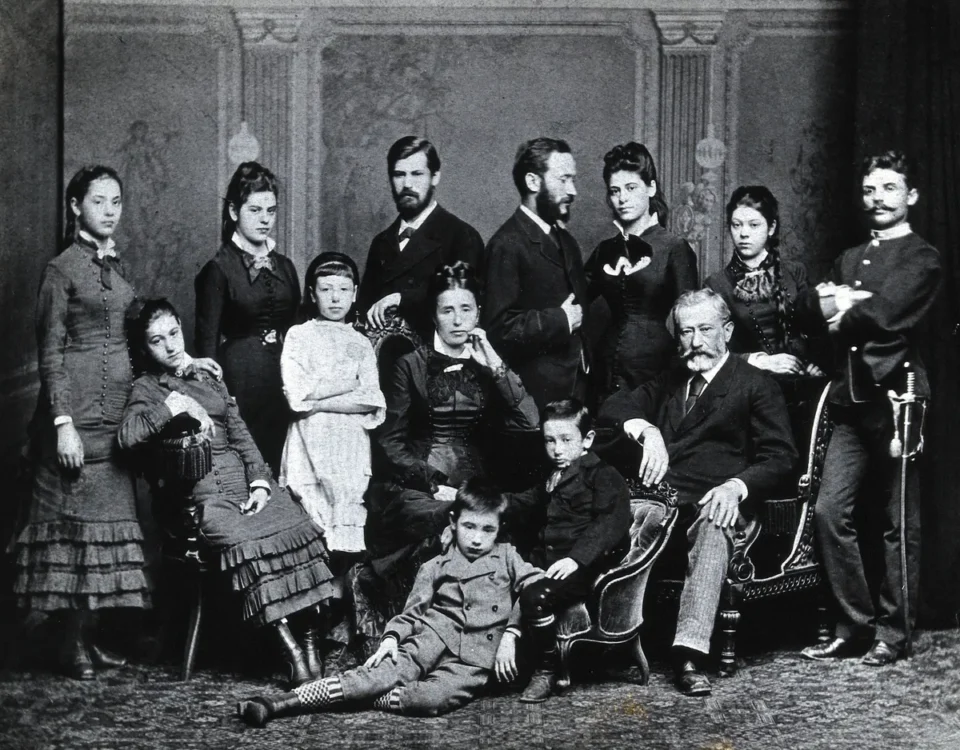
Empathy to Expertise: Building Strong Doctor-Patient Relationships
April 11, 2025
Mastering Mental Health: Strategies for SAD, Sleep Paralysis, and Work-Life Balance
April 11, 2025Summary (TL;DR)
Overcoming the tendency to compare yourself to others is crucial; focus on your unique journey and recognize that everyone faces unseen struggles.
For mastering complex subjects like physiology, Physeo’s videos, practice questions, and Anki decks provide a comprehensive approach to understanding and integrating concepts. Additionally, debunking common medical myths—such as the misuse of sewing needles for suturing or tilting your head back during nosebleeds—helps build accurate knowledge.
Medical school is a journey filled with challenges, from battling sleepless nights to grappling with the pressures of comparison. This comprehensive guide aims to address these common struggles while providing practical solutions and insights for medical students. By combining wisdom from multiple perspectives, we'll explore strategies for improving sleep quality, overcoming the comparison mentality, mastering physiology studies, and debunking common medical myths.
The Battle Against Insomnia: Strategies for Better Sleep
Sleepless nights, intrusive thoughts, tired limbs, and an exhausted mind – these experiences are all too familiar to many medical students. Insomnia has long been one of the most trying disorders, affecting every aspect of life. A 2017 study revealed that almost 60% of college students suffered from poor-quality sleep, a statistic that resonates deeply with personal experiences during medical training. The lack of sleep made daily life miserable, impacting academics, memory, and social interactions. After months of experimentation and seeking help, several effective strategies emerged for combating insomnia.
Firstly, limiting oddly-timed naps is crucial. When struggling with sleep issues, taking naps at inappropriate times can exacerbate the problem. Imagine sleeping at 5 am, waking up at 8 am for classes, then taking a nap from 3 pm to 8 pm. Such patterns disrupt our circadian rhythm, the 24-hour sleep-wake cycle that regulates our internal clock. Instead of succumbing to daytime sleepiness, it's better to hold off and save sleep for a complete night's rest. This approach helps reset your sleep cycle and leads to more refreshing sleep.
Dietary habits play a significant role in sleep quality. As the saying goes, "You are what you eat," and this holds true for sleep health. Medical research shows that high-fat and high-sugar diets are linked to poor sleep quality. Additionally, beverages like coffee and alcohol can significantly impact sleep patterns. Caffeine may linger in the bloodstream for up to six hours after consumption, which is why experts recommend reducing caffeine use in the afternoon and evening. Interestingly, while alcohol may initially induce drowsiness, it ultimately disrupts sleep quality, leading to unrested feelings upon waking. Incorporating healthy, high-fiber foods like bananas and strawberries into your diet before bedtime can promote better sleep.
Regular exercise is another powerful tool for improving sleep. Research fellows at Johns Hopkins Center for Sleep have found that engaging in at least 30 minutes of moderate aerobic exercise can enhance sleep quality that same night. Although the exact mechanism isn't fully understood, it's believed that exercise-induced endorphin release and increased core body temperature contribute to better sleep. Regardless of when you choose to exercise, maintaining daily physical activity can significantly improve sleep quality.
For those struggling with mild to moderate insomnia, natural sleeping aids like melatonin can be incredibly helpful. Melatonin is a hormone naturally produced by the pineal gland, with levels typically rising at night. Darkness triggers its release, and its presence remains elevated throughout the night until suppressed by daylight. This natural supplement helps regulate circadian rhythms and synchronize our sleep-wake cycle with night and day, facilitating the transition to sleep and supporting regular, quality rest. Starting with the dosage recommended by your pharmacist can often lead to noticeable improvements in sleep patterns.
When other methods prove insufficient, Cognitive Behavioral Therapy for Insomnia (CBT-I) offers a structured and evidence-based approach to chronic sleep issues. This therapy focuses on the relationship between thoughts, actions, and sleep patterns. During 6 to 8 sessions, each lasting about an hour, qualified CBT-I clinicians assist in identifying thoughts, feelings, and behaviors contributing to insomnia symptoms. Unlike temporary fixes provided by sleep medication, CBT-I helps people return to normal sleep patterns permanently. Research shows that 70-80% of people undergoing CBT-I witness marked improvements in their insomnia without medication.
The battle against insomnia requires patience and persistence. By implementing these strategies – managing naps, adjusting dietary habits, exercising regularly, considering natural supplements, and exploring therapeutic options – medical students can significantly improve their sleep quality. This foundation of restful sleep becomes crucial as students face other challenges in their academic journey, particularly the psychological pressures unique to medical education.
Overcoming the Comparison Mentality in Medical Education
The journey through medical school often brings not just academic challenges but also significant psychological pressures. Upon graduation, many students find themselves returning to hometowns where friends have seemingly progressed further in life. They encounter peers who are engaged, married, homeowners, or parents, while they themselves hold only an expensive diploma and face an extended educational path ahead. This stark contrast can trigger intense feelings of inadequacy and doubt, especially when compounded by pandemic-related disruptions and examination cancellations. These circumstances can make one feel as though they're falling behind in life's race, questioning their worth and progress.
Comparison emerges as a primary thief of joy during these times. Social gatherings, such as weddings, can become minefields of self-doubt when surrounded by friends who have achieved traditional milestones. Being the only single person in a group, still living with parents, and pursuing further studies can evoke feelings of embarrassment and inadequacy. Each "life update" question met with "Not yet" responses can make one feel increasingly small and insignificant. However, these moments of comparison often overlook the unique adventures and achievements that define one's personal journey.
It's crucial to remember that we rarely know the full extent of others' struggles. While social media showcases perfect lives, the reality often includes hidden challenges. New homeowners face leaky faucets and boiler issues, while new parents endure sleepless nights with colicky babies. Recognizing that everyone presents only their best moments helps maintain perspective and appreciate one's own journey despite its difficulties. This understanding prompts us to consider reaching out for help when needed, fostering a more supportive community.
Progress manifests differently for everyone, and the "traditional route" to success is often an illusion. Many students take longer paths, encountering numerous setbacks along the way. Yet, at each milestone, whether progress came in inches or miles, they ultimately arrived exactly where they were meant to be. This realization helps combat the resentment and anger that constant comparison can breed. When faced with failures or setbacks, instead of asking "Why me?" it's more productive to focus on disciplined effort rather than dwelling in bitterness.
While the road may be longer than anticipated, it doesn't diminish the journey's value. Unexpected blessings often emerge from challenging situations. Family support, rekindled friendships, and opportunities for personal growth become apparent when not focused solely on traditional milestones. Celebrating small victories, like family holidays or creative pursuits, provides valuable perspective. Remembering initial aspirations, such as childhood dreams of becoming a doctor, can reaffirm that the current path, though extended, remains aligned with personal goals and desires.

Mastering Physiology: An Integrated Approach to Medical Studies
Physiology stands as one of medicine's foundational pillars, requiring a deep understanding rather than mere memorization. Unlike subjects such as microbiology that demand extensive rote learning, physiology demands comprehension of underlying mechanisms. The key lies in constantly asking "why" questions – for instance, understanding not just what happens during each step of the cardiac cycle but why it occurs as it does. This conceptual approach proves invaluable when integrating physiology with other subjects like pathology and pharmacology during basic sciences and USMLE Step 1 preparation.
Physeo emerges as an exceptional resource for mastering physiology, offering a comprehensive suite of tools designed to facilitate deep understanding. Their video series provides visual explanations and interactive question checkpoints, ensuring concept retention through ten to fifteen-minute segments. These videos serve dual purposes: as pre-lecture primers during pre-clinical years and as review materials during dedicated study periods. The accompanying textbook offers thorough summaries that complement First Aid annotations, creating an organized system for consolidating knowledge across resources.
Practice questions play a crucial role in reinforcing physiological concepts. Immediately following video lessons, Physeo's practice questions test short-term retention, while topic-specific questions after lectures solidify classroom learning. During dedicated USMLE study periods, a systematic approach involves noting weak areas from daily practice tests and revisiting relevant Physeo videos. This method allows targeted improvement using resources like USMLE Rx for specific topics, such as cardiac PV loops or congenital defects, demonstrating remarkable effectiveness in boosting performance on practice exams.
Anki decks provide another powerful tool for active learning and long-term retention. Physeo's custom-made Anki cards build upon each other, ensuring continuous review of previous material while introducing new concepts. Used effectively at the end of study sessions, these cards align with research suggesting repetitive active learning maximizes retention. Supplementing with Yousmle physiology decks enhances this active learning approach, creating a robust system for mastering complex physiological processes.
What sets Physeo apart is its integrated approach to medical education. Rather than focusing solely on physiology, it connects concepts across various subjects including biochemistry, anatomy, and pathology. This interconnectedness proves invaluable for Step 1 preparation, where questions often require applying physiological principles across multiple domains. The resource's comprehensive nature eliminates the need for multiple platforms, streamlining the study process while ensuring depth of understanding in all relevant subjects.
A structured daily study schedule optimizes the use of these resources. During pre-clinical years, this might involve morning lectures followed by lunch breaks, collaborative study sessions with peers, exercise classes, dinner, and evening pre-reading of Physeo videos for the next day's lecture. In contrast, dedicated USMLE study periods demand more intensive schedules, beginning with early morning exercise, followed by blocks of UWorld and USMLE Rx practice questions, video reviews, and concluding with Anki deck sessions. This systematic approach ensures consistent exposure to material while allowing time for both active learning and physical well-being.
Supplemental resources complement Physeo's offerings effectively. Boards and Beyond videos provide alternative explanations, while UWorld and USMLE Rx offer diverse question banks for practice. These resources, combined with class lectures and First Aid annotations, create a multi-layered learning experience that caters to different learning styles and reinforces key concepts through varied presentations. The combination of these tools, centered around Physeo's integrated approach, establishes a comprehensive framework for mastering physiology and excelling in medical studies.

Debunking Common Medical Myths: Separating Fact from Fiction
Popular culture often perpetuates misconceptions about medical procedures and practices, leading to widespread misunderstandings among the general public. One prevalent myth involves the use of sewing needles and thread for suturing wounds. Surgical needles and sutures differ significantly from their domestic counterparts in size, shape, and material composition. Surgical needles come in various types specifically designed for different functions and anatomical locations, making them unsuitable substitutes for regular sewing equipment. This misconception is humorously portrayed in films like "Babel," where characters attempt to stitch wounds with household sewing materials, highlighting the impracticality and potential danger of such practices.
Another common misunderstanding revolves around the nature of suturing itself. While some stitches may resemble basic sewing techniques, proper medical suturing requires specialized skills and knowledge. Improper technique can result in failed wound closure and additional tissue damage. For minor wounds, modern alternatives like liquid adhesives offer safer and more accessible options for home first aid. These products, readily available online, provide an effective solution for wound closure without the risks associated with improper suturing attempts.
Cardiac emergencies present another area rife with misconceptions, particularly regarding defibrillator use and CPR effectiveness. The dramatic scenes of doctors shocking flatlined patients back to life, popularized in countless movies and even the film "Flatliners," bear little resemblance to medical reality. Defibrillators work by correcting irregular heart rhythms, not by jumpstarting a stopped heart. Cardiac arrest resulting in asystole (flatline) requires immediate chest compressions rather than defibrillation attempts. Similarly, the public's perception of CPR success rates vastly exceeds reality, with less than 10% of cases achieving positive outcomes and only 8% of survivors emerging with minimal cognitive impairment.
First aid procedures for various emergencies often suffer from widespread misinformation. Traditional advice to apply tourniquets to snake bites or tilt heads back during nosebleeds can actually cause more harm than good. Snake bite tourniquets risk causing limb ischemia, prompting the CDC to revise guidelines in favor of washing the area and applying dry dressings. Nosebleed management demonstrates how dangerous incorrect positioning can be – tilting the head back risks blood entering the trachea and causing airway obstruction. Proper technique involves pinching the nose and tilting the head forward to allow safe blood drainage.
Other common myths include the belief that placing objects in a seizing person's mouth prevents tongue biting or that removing impaled objects from stabbing victims is beneficial. Both practices carry significant risks – attempting to insert objects during seizures can lead to fatal choking, while removing impaled objects can cause catastrophic bleeding. Proper seizure management involves turning the patient onto their side and maintaining an open airway without restraint. Similarly, impaled objects should remain untouched until professional medical intervention can safely remove them in a controlled environment.
Misunderstandings about concussion management also persist, particularly regarding sleep recommendations. While observation for worsening symptoms is crucial, the notion that sleep itself poses danger to concussion patients is unfounded. These myths, though seemingly harmless, can occasionally lead to severe complications. Understanding the limitations of popular medical knowledge and recognizing the evolving nature of medical science becomes essential for both healthcare professionals and the general public. By debunking these misconceptions, we can promote safer practices and more accurate understanding of medical emergencies.
Conclusion: Building Resilience Through Comprehensive Support Systems
The journey through medical school demands more than just academic excellence; it requires cultivating resilience through multiple support systems. Quality sleep serves as the foundation for cognitive function and emotional stability, enabling students to process information effectively and manage stress. By implementing proven sleep strategies and addressing insomnia proactively, medical students can optimize their mental and physical well-being. This foundation proves crucial when facing the psychological pressures unique to medical education, particularly the pervasive comparison mentality that affects so many students.
Personal growth emerges as a vital component of medical training, necessitating a shift from external comparisons to internal validation. Recognizing that progress manifests differently for each individual helps students develop a healthier perspective on their journey. The integration of professional development with personal well-being creates a balanced approach to medical education, where achievements are measured not just by grades or milestones, but by personal growth and resilience. Mastering subjects like physiology through comprehensive resources like Physeo exemplifies how structured learning can transform daunting challenges into manageable tasks.
Debunking common medical myths not only enhances clinical knowledge but also fosters critical thinking skills essential for future physicians. Understanding the difference between popular misconceptions and evidence-based practices prepares students to educate their future patients effectively. This knowledge base, combined with practical strategies for managing sleep and mental health, creates a robust framework for navigating medical school successfully. By embracing these multifaceted approaches, students can build the resilience necessary to excel in their studies while maintaining their well-being throughout their medical education journey.

Topic FAQs
Take Your Medical Education to the Next Level with Physeo
Whether you're preparing for Step 1, Step 2, or striving to become a more confident and compassionate physician, Physeo is here to support your journey. Our resources are designed to help you master complex concepts, stay motivated, and achieve your goals.
📚 Unlock Premium Study Tools
Dive into our comprehensive video lessons, image mnemonics, and proven study plans tailored for success. Check out Our Plans to explore subscription options and find the perfect plan for your needs.
💡 Stay Inspired with Our Blog
Looking for tips on excelling in medical school, overcoming burnout, or balancing life as a student or professional? Check out our Blog. It’s your go-to resource for actionable advice and stories from fellow medical students and professionals.
📺 Boost Your Learning with Our YouTube Channel
Prefer learning through videos? Subscribe to our YouTube channel for free tutorials, step-by-step explanations, and expert insights to help you ace your exams and thrive in your medical career.
📱 Connect with Us on Social Media
Stay updated, inspired, and connected with Physeo across our social media platforms:
- Instagram: Follow us on Instagram for daily motivation, study tips, and behind-the-scenes content.
- Facebook: Join our community Here for updates, discussions, and support.
- LinkedIn: Connect with us professionally at LinkedIn for industry insights, career advice, and networking opportunities.
🚀 Ready to Excel?
Invest in yourself and your future patients by joining the Physeo community today. Let’s work together to create a generation of healthcare providers who lead with knowledge and compassion.
Start Your Journey NowAuthor
Mitali Chansarkar, Adila Reddy, Paula Danika A. Binsol and Abu Huraira Khan
Content Creators
Latest articles
Our newsletter
- Work-Life Balance
- USMLE Prep
- Study Tools
- Stress Management
- Spaced Repetition
- Residency Applications
- Physeo
- Personal Growth
- Pathology Education
- OB/GYN Specialty
- Nutrition
- Neuroscience
- Mental Health
- Medical School Tips
- Healthcare Innovation
- Global Health
- Fitness & Wellness
- Faith & Medicine
- Doctor-Patient Relationships
- Creativity in Science
- Career Planning
- Anatomy Mastery













